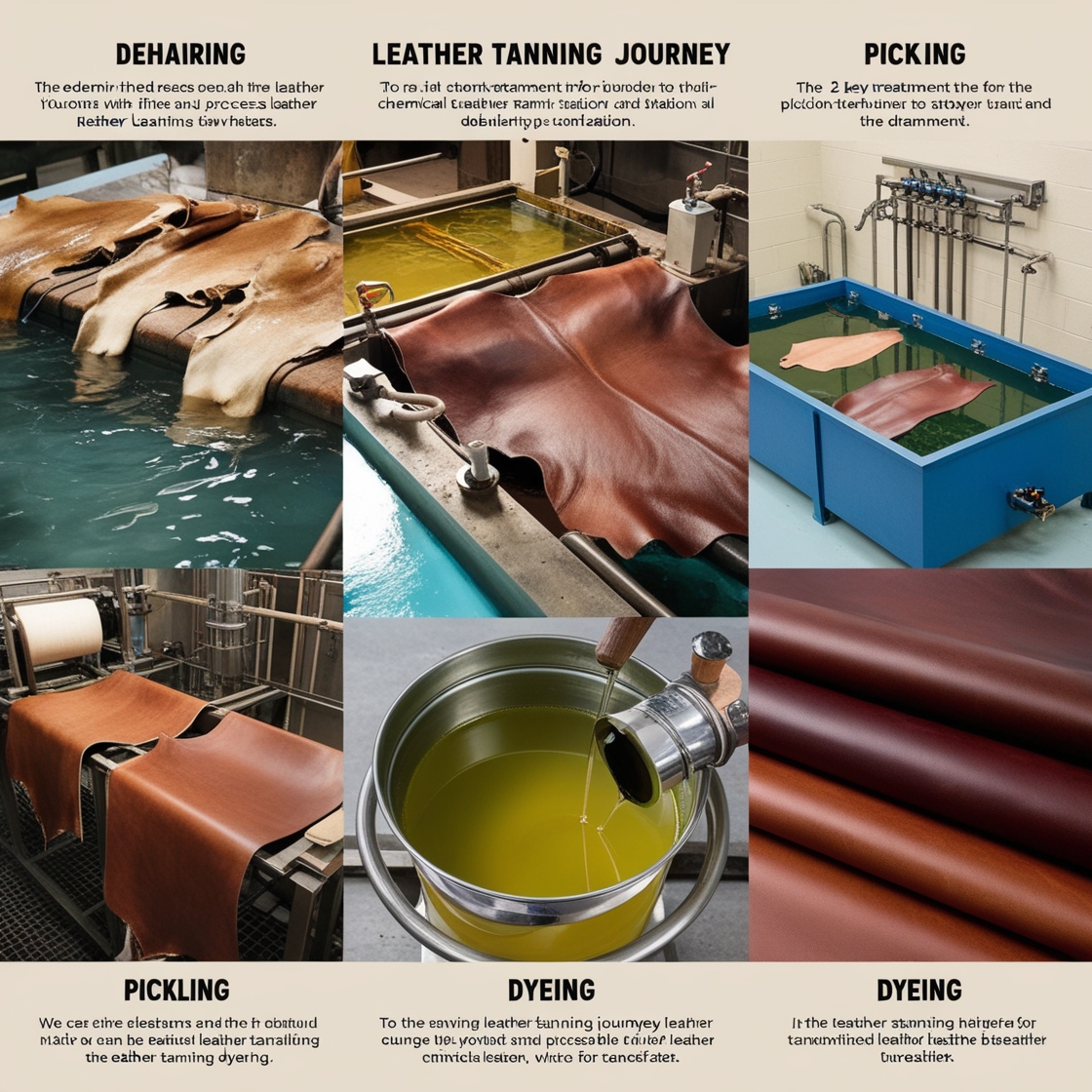Introduction to Leather Tanning Processes
Leather tanning is a complex art that transforms raw hides into beautiful, durable leather. Understanding key processes like dehairing, pickling, and dyeing is essential for anyone interested in leather crafting. In this article, we’ll explore these critical steps and their importance in creating high-quality leather.
What is Dehairing?
Dehairing is the first step in the tanning process, where the hair is removed from the animal hide. This step is crucial for preparing the hide for further treatment.
Why Dehairing is Important
Removing hair prevents contamination and ensures a clean surface for the tanning process. It also helps improve the leather’s overall texture and appearance.
The Dehairing Process
1. Soaking the Hides
Hides are soaked in water to soften them, making it easier to remove hair. This step is vital for achieving a uniform dehairing.
2. Chemical Treatment
After soaking, hides are treated with a combination of chemicals, such as sodium sulfide, to dissolve the hair follicles effectively.
3. Mechanical Removal
Once the hair is loosened, it’s mechanically scraped off, leaving a clean hide ready for the next steps in tanning.
What is Pickling?
Pickling is the process that prepares the hide for tanning by lowering the pH level. This step is essential for ensuring proper dye uptake and tannin penetration.
The Importance of Pickling
Pickling helps to preserve the hide and prevent bacterial growth. It also creates an optimal environment for the subsequent tanning process.
The Pickling Process
1. Acid Treatment
Hides are immersed in a pickle solution, typically composed of salt and acid, to achieve the desired pH level.
2. Soaking Duration
The hides are soaked for a specific time, usually 24 to 48 hours, to ensure thorough pickling and preservation.
What is Dyeing?
Dyeing is the final step in the tanning process where color is added to the leather. This not only enhances the leather’s aesthetic appeal but also helps protect it.
Benefits of Dyeing
Proper dyeing ensures even coloration and improves the leather’s resistance to fading and wear over time.
The Dyeing Process
1. Preparing the Dye
Dyes can be natural or synthetic. Preparing the right dye solution is crucial for achieving the desired color and finish.
2. Application Techniques
Dyeing can be done through various methods, including immersion, spraying, or brushing. Each method has its advantages depending on the desired outcome.
3. Setting the Color
After applying the dye, the leather is often heat-treated or dried to set the color and enhance durability.
Conclusion
The processes of dehairing, pickling, and dyeing are fundamental steps in the leather tanning journey. Each stage plays a crucial role in transforming raw hides into high-quality leather products. Understanding these processes can enhance your appreciation for leather crafting and inspire your own creative projects.
